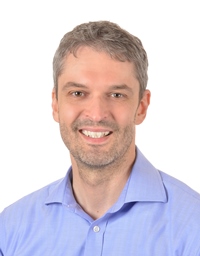Resilient Performance Beyond the Risk Horizon
Advances in Project Management Series
SERIES ARTICLE
By Elmar Kutsch
Germany and UK
Many authors treat projects with a strongly ‘mechanistic’ approach. The work can be broken down, executed and controlled as a series of interlocking parts. This is the technical, engineering-based conceptualisation, derived from the roots of the subject in large research and development projects. While acknowledging the many benefits of this view, we take a slightly different approach. We, in the book Mindful Project Management: Resilience Performance beyond the Risk Horizon, understand projects as ‘organic’ constructs, living and mindful entities existing for a finite period of time, consisting of people, supported by structures and processes. To continue the biological metaphor, this mindful organism is constantly challenged by environmental adversity. Success depends on remaining resilient, which we view as the ability to mindfully notice, interpret, prepare for, and consistently to contain and recover from such adversity.
Towards a self-evidently correct framework
Mankind has achieved magnificent project outcomes for thousands of years. Marvels such as the Pyramids of Giza, the Great Wall of China, the Parthenon, and Stonehenge were constructed without modern-day techniques and software tools, although often with abundant yet expendable human resources. The twentieth century, though, experienced a new age of industrialisation and a drive towards repeatability of manufacturing outputs, mass-production and the pursuit of greater order and efficiency. Considered a milestone in the development of project management, Henry Gantt (1861–1919) developed the Gantt Chart. It illustrates the phases and tasks of a project schedule so that they can be understood easily.
The 1950s marked the emergence of the ‘Program Evaluation and Review Technique’ (PERT), deployed and exercised in the Polaris missile submarine programme. PERT displays how much time (involving the most likely, optimistic and pessimistic estimates) is allocated to a component of a project, such as a project task. It lays down interdependencies between these components that allow the definition of a critical path; any deviation or change from that path will have an automatic influence on the end date of the project.
Such techniques are now commonly applied in planning modern projects and often represent the core technique of management by planning. However, it was not until the 1960s that the development of these techniques led to the recognition of project management as a discipline. In 1969, the Project Management Institute (PMI) was founded. This not-for-profit project management organisation is one of the most recognised member associations in the world. It advocates providing project managers with a universal set of tools and techniques to manage projects successfully. As a consequence, the Project Management Body of Knowledge (PMBOK) Guide was published in 1987. Over the years, further internationally recognised frameworks and sourcebooks in project management have been developed, such as PRINCE2 and the Association for Project Management’s (APM) Body of Knowledge. They form part of a wider narrative advocating a set of normative procedures that, if applied correctly, will lead to success.
Beyond the risk horizon
The further out we move, though, the greater the amount of epistemic uncertainty we are faced with through diminishing precision, and situations that are more open to interpretation, projections and speculations. Traditional project management tools and techniques may well be limited in helping us with epistemic uncertainty. Instead of focusing predominantly on hindsight as a predicator for the future, we need mindful approaches to deal with projections and speculations, so we are not caught out by the complexity in a project…
More…
To read entire article, click here
Editor’s note: The Advances in Project Management series includes articles by authors of program and project management books published by Routledge worldwide. Their contributions to the PMWJ are coordinated by Prof. Darren Dalcher of Lancaster University Management School, UK.
How to cite this paper: Kutsch, E. (2020). Mindful Project Management: Resilient Performance Beyond the Risk Horizon, PM World Journal, Vol. IX, Issue X, October. Available online at https://pmworldlibrary.net/wp-content/uploads/2020/10/pmwj98-Oct2020-Kutsch-mindful-project-management.pdf
About the Author

Elmar Kutsch
Germany and UK
![]()
Being uncomfortable is both a challenge and an opportunity for Elmar. As a passionate Skydiver his interests, both privately and professionally, revolve around the management of the unexpected. Elmar’s first real exposure to the rather paradox world of uncertainty began in 1998, when he held a variety of commercial and senior management positions within the Information Technology (IT) industry. Working for one of the biggest ITservice providers in Germany, Elmar was responsible for the successful delivery of a number of large projects, including major roll-out and outsourcing strategies. Clients included the banks Commerzbank, the Deutsche Börse (German Stock Exchange) and the Polizei Rheinland Pfalz (State Police Rhineland Palatinate). His passion for the management of risk and uncertainty in projects then led him to pursue a career in academia. He served as a Lecturer in Operations Management at the University of Surrey and has been at Cranfield since 2007.









